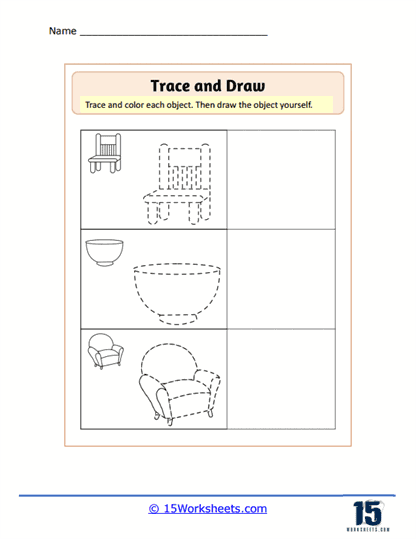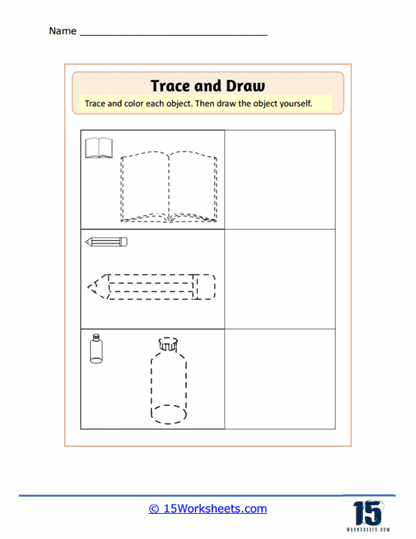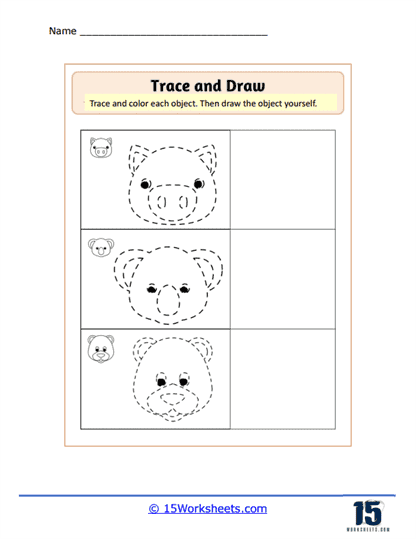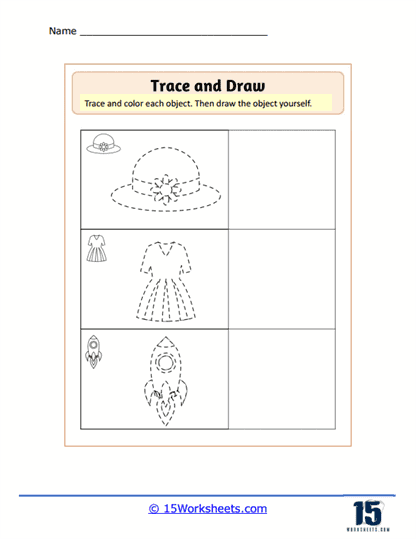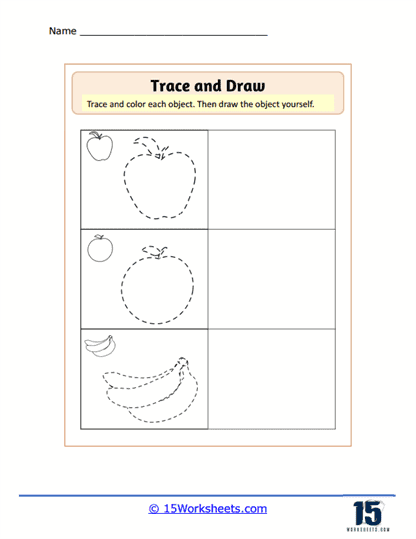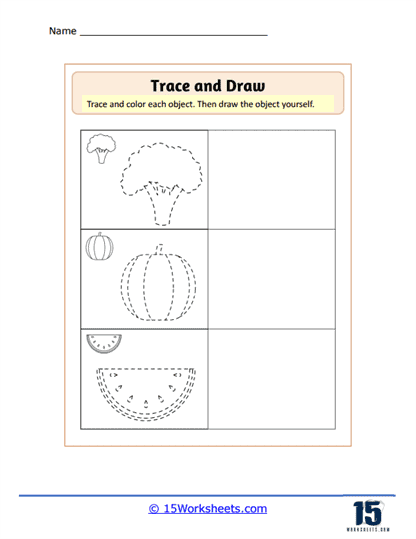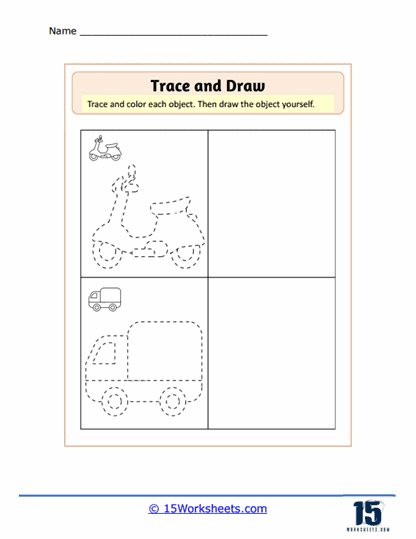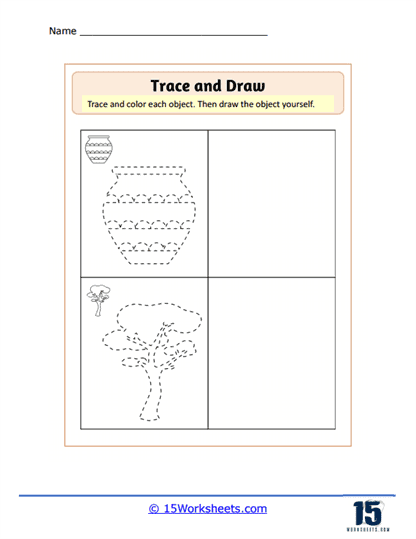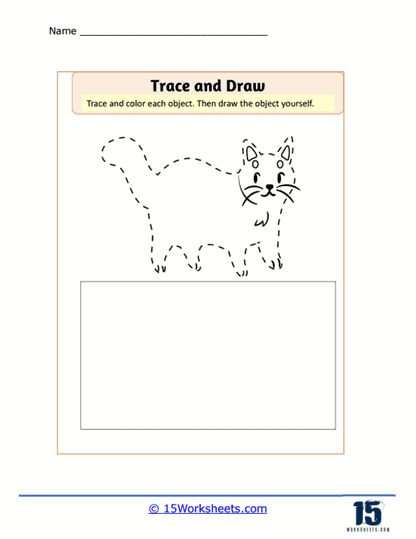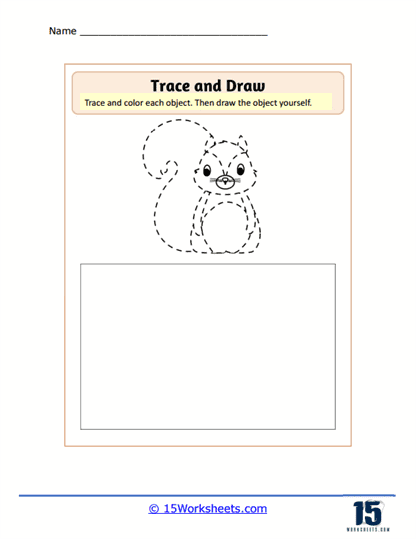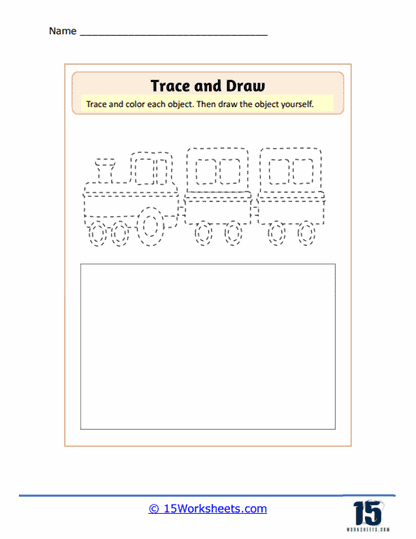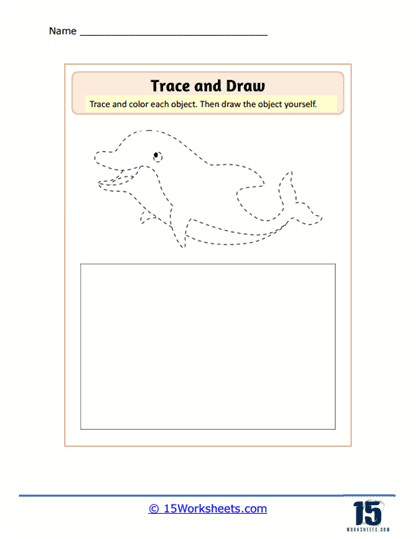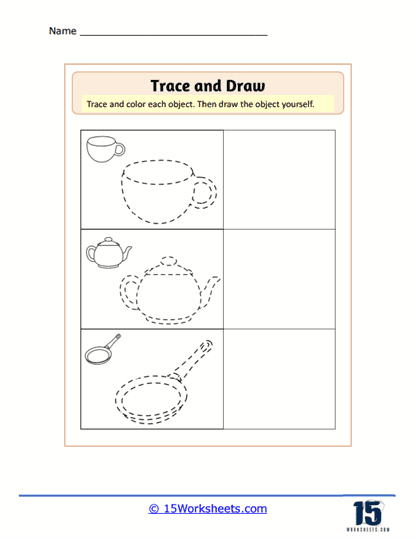Trace and Draw Worksheets
About These 15 Worksheets
Trace and Draw worksheets are educational resources designed to help children develop and practice their fine motor skills, hand-eye coordination, and creativity. These worksheets typically include a combination of tracing activities and drawing prompts, which encourage children to both follow pre-drawn images and create their own drawings.
Some common elements of Trace and Draw worksheets may include:
Tracing Simple Shapes or Patterns – Worksheets may feature basic geometric shapes, patterns, or lines for children to trace, helping them practice their fine motor skills and pencil control.
Tracing Objects or Characters – Children can trace pre-drawn images of everyday objects, animals, or characters to practice their hand-eye coordination and develop familiarity with various forms.
Tracing Numbers and Letters – Worksheets may include faint outlines of letters or numbers for children to trace, helping them become familiar with their shapes and improve their handwriting skills.
Drawing Prompts – Worksheets can include prompts or instructions that encourage children to create their own drawings, which can help develop their creativity, imagination, and self-expression.
Guided Drawings – Step-by-step drawing instructions can help children practice their pencil control while learning to draw various objects, animals, or characters.
Complete the Drawing – Some worksheets may present partially completed drawings and ask children to complete the image, helping them develop their creativity and observational skills.
Trace and Draw worksheets can be used in various settings, such as classrooms, therapy sessions, or at home, and can be adapted to suit different age groups and developmental levels. These worksheets help children develop essential fine motor skills, hand-eye coordination, and creativity while engaging in a fun and interactive learning activity.
How Does This Improve Student Writing?
Tracing and drawing are crucial developmental activities for children as they begin to learn how to write. These exercises not only develop children’s fine motor skills, but they also pave the way for understanding letter shapes, the rules of writing, and spatial relationships, all of which contribute to effective and proper writing. The following explanation delves deeper into this topic.
Firstly, tracing and drawing are paramount in the development of fine motor skills. Fine motor skills refer to the coordination between small muscles, like those in the hands and fingers, with the eyes. As children trace over lines and shapes or draw pictures, they are strengthening these small muscles, improving their hand-eye coordination, and gaining control over their hand movements. These are all essential for writing, as precise hand and finger movements are necessary to form letters and words properly.
Drawing is also one of the first ways children express themselves before they can write. They learn how to hold a pencil or crayon, apply different amounts of pressure, and maneuver it to create the shapes they want. By manipulating a writing tool, they are preparing their muscles for the more structured task of writing.
Secondly, tracing can directly support the understanding of letter shapes. Each letter of the alphabet has a unique form and requires different strokes. Tracing helps children familiarize themselves with these shapes and strokes. As they trace over the contours of each letter, they are encoding the shapes into their muscle memory, which eventually enables them to reproduce the letters without the need for tracing. This familiarity also helps in recognizing letters, a fundamental step in learning to read.
Tracing also promotes the understanding of writing rules. In English, for instance, we write from left to right and top to bottom. Children learn this rule by following the directions of the arrows in tracing exercises. Additionally, tracing lowercase and uppercase letters helps children understand the concept of capitalization.
Thirdly, tracing and drawing help children comprehend spatial relationships, which are critical for writing. Understanding how letters fit together to form words, how words relate to each other to create sentences, and how to use space on the page properly are all important aspects of writing. Drawing and tracing activities often involve placing objects or shapes in relation to each other (above, below, next to, etc.), which reinforces this concept.
For example, a child might first learn to draw a simple scene, like a tree next to a house. This introduces the idea that things have a place in relation to one another. Later, when learning to write, they apply this knowledge to understand that letters have a specific place in relation to each other to form words and sentences.

